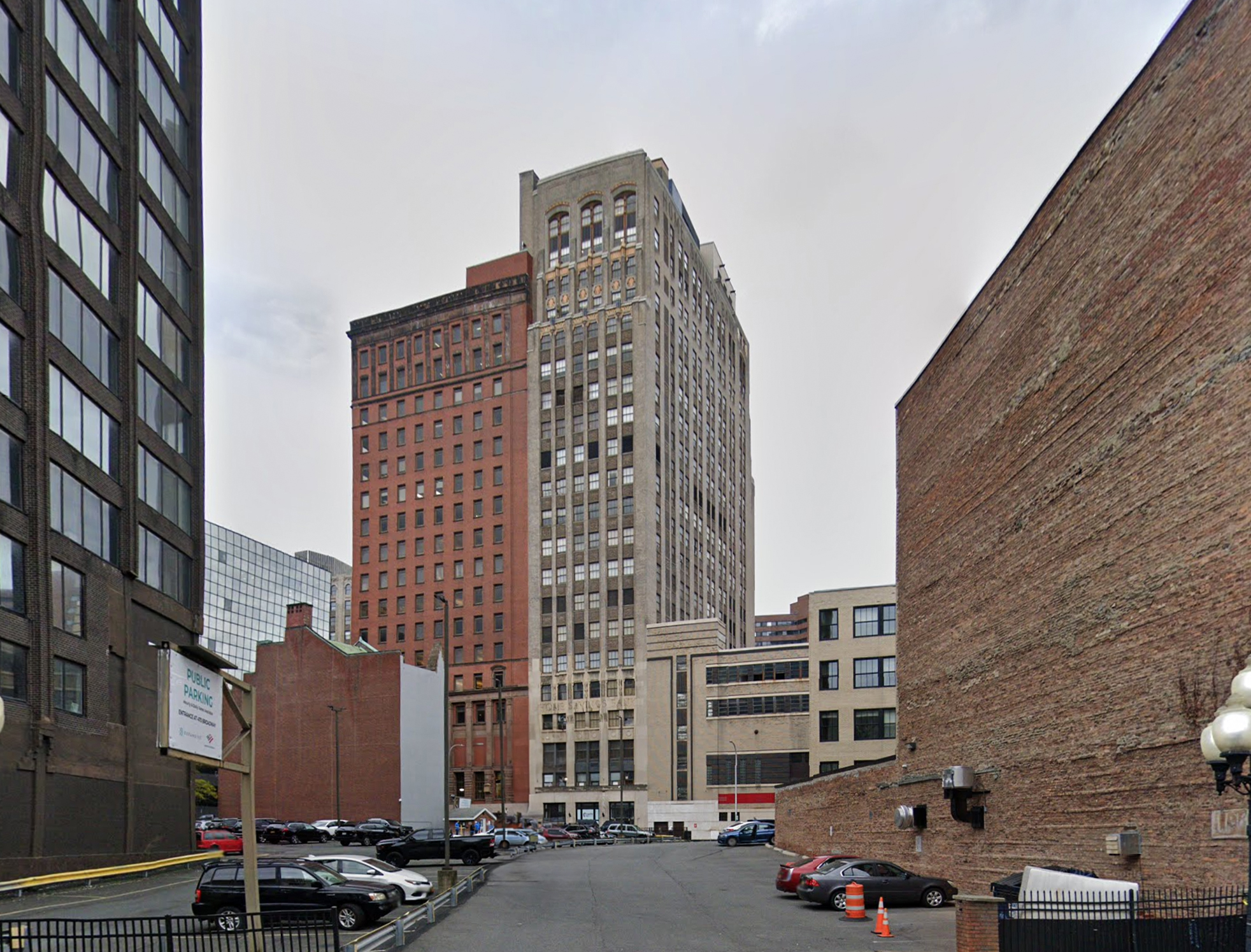The Home Savings Bank Building is an Art-deco skyscraper designed by Dennison & Hirons, and built in 1927 in Albany, NY.
Home Savings Bank Building is not the only name you might know this building by though. The building is, or has also been known as Home Savings Bank of the City of Albany Building.
Its precise street address is 11 North Pearl Street, Albany, NY. You can also find it on the map here.
When it was completed in 1927, the Home Savings Bank was the tallest building in Albany, NY.
Even though the building is not cataloged, it was included as a contributing property to the catalogation of the Downton Albany Historic Dsitric in 1980, when it was included in the National Register of Historic Places.


